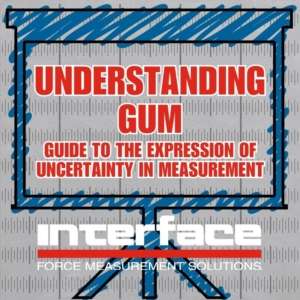Understanding GUM and Measurement Uncertainty
 Understanding GUM and adherence to good test and measurement practices are essential to minimize uncertainties and ensure reliable measurement results for every application.
Understanding GUM and adherence to good test and measurement practices are essential to minimize uncertainties and ensure reliable measurement results for every application.
In the context of test and measurement, GUM stands for Guide to the Expression of Uncertainty in Measurement. The GUM is a widely recognized and internationally accepted document published by the Joint Committee for Guides in Metrology (JCGM), which provides guidelines for evaluating and expressing uncertainties in measurement results.
GUM establishes general rules for evaluating and expressing uncertainty in measurement that are intended to be applicable to a broad spectrum of measurements. A critical portion of any measurement process, the GUM outlines a thorough framework for uncertainty estimation. GUM defines terms and concepts related to uncertainty, describes methods for uncertainty calculation, and offers guidance for reporting and the documentation of uncertainties in measurement results.
The GUM provides a systematic approach to assess and quantify uncertainties by source, including equipment constraints, environmental conditions, calibration procedures, and human factors. The standards set by GUM emphasizes the need for considering and quantifying all substantial uncertainty components to ensure reliable and traceable measurement results.
By following the principles and guidelines outlined in the GUM, test and measurement professionals, metrologists, and scientists ensure standardized approach to uncertainty evaluation and reporting, facilitating comparability and consistency of measurement results across different laboratories and industries.
The uncertainty requirement varies for different use cases and industry applications. For example, for aerospace, defense, and medical devices there are strict uncertainty requirements compared to commercial scales or measurement tests that do not need precision accuracy.
When estimating uncertainty in load cell calibration, it is important to refer to the Guide to the Expression of Uncertainty in Measurement (GUM). The GUM provides a comprehensive framework with general rules for evaluating and expressing uncertainty in measurement. It serves as a guide applicable to a wide range of measurements, providing valuable guidance on uncertainty assessment in load cell calibration and other measurement processes.
In test labs that utilize load cells and torque transducers, the principles and guidelines GUM should be consistently applied to accurately evaluate and express uncertainties associated with the measurements obtained from these devices.
The application of GUM in test labs using load cells and torque transducers requires a thorough understanding of the measurement process, relevant standards, and calibration procedures. Read Understanding Uncertainty in Load Cell Calibration for more information.
Different considerations to measure uncertainty
- Determine what parameter is to be measured and the units of measure.
- Identify the components of the calibration process and the accompanying sources of error.
- Write an expression for the uncertainty of each source of error.
- Determine the probability distribution for each source of error.
- Calculate a standard uncertainty for each source of error for the range or value of interest.
- Construct an uncertainty budget that lists all the components and their standard uncertainty calculations
- Combine the standard uncertainty calculations and apply a coverage factor to obtain the final expanded uncertainty.
GUM is used to identify and characterize uncertainty sources that can affect the measurements obtained from load cells and torque transducers. These sources may include calibration uncertainties, environmental conditions, electrical noise, stability of the test setup, and other relevant factors. Each of these sources should be quantified and considered in the uncertainty analysis.
Quantitative estimates of uncertainty component contributions to the overall uncertainty need to be determined. This can involve conducting experiments, performing calibration procedures, analyzing historical data, or utilizing manufacturer specifications to obtain uncertainty values for each component.
Once sources and estimates are complete, next step is to combine the individual uncertainty components using appropriate mathematical methods prescribed by the GUM. These methods include root-sum-of-squares (RSS), statistical analysis, and other relevant techniques. The aim is to obtain an overall estimate of uncertainty that accounts for the combined effects of all relevant sources.
The GUM provides guidelines on expressing uncertainties in measurement results. It emphasizes the use of confidence intervals, expanded uncertainty, and coverage factors. The uncertainty should be reported alongside the measurement values, indicating the level of confidence associated with the measurement. This allows the users of the measurement data to understand the reliability and accuracy of the obtained results.
For additional information about GUM, errors and setting an uncertainty budget, watch our webinar Accurate Report on Calibration. The video is set to start on the topic of Measurement Uncertainty.
It is essential to consider the specific uncertainty requirement of the application to ensure that the chosen force measurement device is appropriately calibrated for the project. This resource is a helpful recap: Specifying Accuracy Requirements When Selecting Load Cells.
In addition, understanding GUM, reducing uncertainty with regular calibration of testing devices and proper maintenance of the equipment go together with GUM.
ADDITIONAL RESOURCES
Gold Standard® Calibration System
Accurate Report on Calibration
Load Cell Test Protocols and Calibrations
Regular Calibration Service Maintains Load Cell Accuracy








